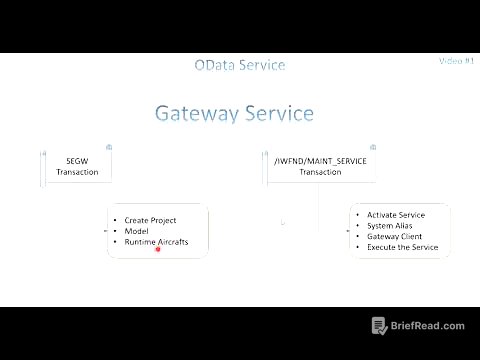TLDR;
This video focuses on a PMP exam preparation question centered around executing projects with urgency to deliver business value. It emphasizes the importance of balancing agile and predictive approaches, prioritizing value-driven decisions, and understanding the cost of delay. The key takeaway is to identify and rapidly deploy minimum viable features to capitalize on immediate opportunities for business improvement.
- Prioritize delivering business value with urgency.
- Balance agile and predictive approaches in project management.
- Identify and rapidly deploy minimum viable features (MVP) for early release.
- Consider the cost of delay and the risk of not acting promptly.
Introduction to PMP Exam Prep: Process Domain Task One [0:01]
The video introduces a PMP exam preparation session focusing on the process domain, specifically task one, which involves executing projects with urgency to deliver business value. The session aims to dissect a sample question to understand the underlying concepts rather than simply rushing through numerous questions. The core concept revolves around making agile decisions and executing projects with both urgency and awareness.
Analyzing the Project Scenario [0:19]
A project is underway to build a new customer portal with an initial plan for a single, large release. However, market analysis indicates that delivering a basic functional login and account overview feature within two months could significantly reduce customer service call volume immediately. The question posed is: What should the project manager do to deliver business value with urgency?
Evaluating Option A: Maintaining the Original Plan [0:49]
Option A suggests maintaining the original single release plan to avoid scope changes and ensure comprehensive testing before deployment. While not inherently bad, this approach fails to prioritize the urgency of delivering business value. In the context of the PMP exam, it's crucial to seek opportunities to provide value quickly, which this option does not adequately address.
Evaluating Option B: Initiating a Formal Change Request [0:59]
Option B involves initiating a formal change request to rescope the entire project for incremental delivery, requiring full replanning and stakeholder approval. This is deemed unwise because it involves adding significant scope without clear justification. The market analysis specifically highlights the benefit of delivering a basic login and account overview feature, making a complete rescoping of the project unnecessary and inefficient.
Evaluating Option C: Collaborating for Minimum Viable Features [1:11]
Option C proposes collaborating with the product owner and development team to identify the minimum viable features (MVP) for the login and account overview, prioritizing their rapid development and deployment as a first increment. This approach is considered the best option because it allows for a hybrid strategy, balancing the initial plan with an agile response to new market information. It focuses on delivering immediate value without committing to a fully incremental project overhaul.
Evaluating Option D: Conducting a Detailed Cost-Benefit Analysis [1:25]
Option D suggests conducting a detailed cost-benefit analysis of the proposed early release and presenting the findings to the steering committee for a strategic decision before any action. The mention of a "detailed" analysis raises a red flag, as it implies a slow, bureaucratic process that contradicts the need for urgency. This option is seen as the least agile and would delay the delivery of value.
The Best Approach: Prioritizing Value and Urgency [6:17]
The best option is C, which focuses on delivering business value with urgency by collaborating with the team and product owner to identify and prioritize an MVP for early release. This iterative, value-driven approach allows for capitalizing on immediate opportunities. Options A and B delay value delivery, while option D involves a process that would follow the initial assessment, making it too slow for the given scenario.
Key Concepts: Agile Decisions and Value-Driven Thinking [6:54]
On the PMP exam, candidates will face situations requiring agile decisions and the execution of projects with urgency and awareness. This involves assessing product backlogs, requirements management plans, and other documents to identify opportunities for more effective value delivery. The goal is to add as much value to the business as quickly as possible.
Understanding Value, Risk, and Cost of Delay [8:05]
When thinking as a product owner, it's crucial to consider value, the risk of not acting on time, urgency, and the cost of delay. There is a penalty for not addressing certain aspects in the backlog early enough. The ability to deliver features that significantly reduce customer service volume demonstrates value and utility. The key mindset for the exam is to take advantage of opportunities to increase value.




![[여의도튜브] '희토류' 큰소리 치더니 "中, 재앙이 왔다" /머니투데이방송](https://wm-img.halpindev.com/p-briefread_c-10_b-10/urlb/aHR0cDovL2ltZy55b3V0dWJlLmNvbS92aS82dlMxeG9rN3Zzby9ocWRlZmF1bHQuanBn.jpg)




